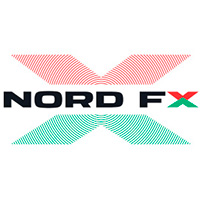In this article, we will cover Exness opinions alongside reporting from the Wall Street Journal, which is a commercial partner of Exness. The U.S. stock market has been behaving in ways contrary to logic and reason. But will that continue in Q3? Here are 5 powerful insights from the Wall Street Journal. Investors can’t stop looking over their shoulders for major risks looming in markets. A familiar question has crept back onto Wall Street: Could this be the most-hated bull market ever?
The S&P 500 charged into bull-market territory in the first six months of 2023, marking a 20% rally from a recent low, yet investors say they can’t stop looking over their shoulders. Even after U.S. stocks overcame big risks—including repeated interest-rate hikes and a banking crisis—money managers say they aren’t convinced this rally is sustainable.
History shows that investors don’t tend to love bull markets when they are in them. Traders grumbled about the 11-year bull run born out of the financial crisis. So far this time, investor anxieties have been largely suppressed. Yet a drop in stocks and surge in bond yields last week after a round of strong economic data show how brittle the current bull market may be.
Investors say they are monitoring worrisome trends in the market. Here are five that are on their minds:
Earnings Season Could Reveal Hidden Weakness
Earnings season kicks off in earnest this week. Some investors are warning it could be bumpy. Companies in the S&P 500 are expected to report a 7.2% decline in earnings for the second quarter, FactSet data show, marking what would be the third consecutive year-over-year earnings decline. Investors are on the lookout for whether corporate pricing power is ebbing. The net profit margin of companies in the S&P 500 is expected to fall to 11.4%, down slightly from the previous quarter and notably lower than the 13% peak reached in 2021. Companies might find themselves squeezed at both ends, investors say, as they face rising financing costs while also struggling to raise prices further as inflation ebbs.
“The market is pricing in a very angelic scenario [for earnings], and we are very reluctant to buy into that,” said Florian Ielpo, head of macro at Lombard Odier Investment Managers. His team has started trimming exposure to stocks in the firm’s flagship multi asset portfolio, he said, while also keeping 25% of it in cash.
The Yield Curve Inversion Is Deepening
A year ago, the U.S. bond market began consistently flashing a recession signal. Lately, the warning has been getting louder. Part of the U.S. Treasury yield curve has been persistently inverted since last July, when the yield on the 10-year U.S. Treasury note slipped below that of its two-year counterpart. Last week, the yield on the 10-year U.S. Treasury note dropped to 1.08 percentage point below that of the two-year yield—the widest negative gap since 1981.
Investors look to the U.S. Treasury yield curve as a gauge of economic health. When the curve inverts, that means bond traders are betting the Federal Reserve will keep rates high in the near term to fight inflation but will then need to cut them later to resuscitate the economy.
Some investors are betting the yield curve will trump more positive signs about growth, including recent data showing continuing resiliency in the labor market.
Global Markets Look Cloudy, Too
Markets outside the U.S. started 2023 on a positive note. China had just lifted its Covid-19 restrictions, stirring optimism that a flurry of spending from Chinese consumers would unleash economic growth at home and abroad. Asian stock indexes initially soared, as did those in Europe. Since then, excitement has faded. Hong Kong’s Hang Seng is in the red for the year, while the Shanghai Composite has gained just 3.5%. Europe’s pan-continental Stoxx Europe 600 is up only slightly more—5.4% for the year—and on Thursday suffered its largest decline since March.
Fading optimism has been driven by darkened economic outlooks. The eurozone has slid into a recession, and investors continue to worry about the impact of the war in Ukraine and inflation that remains more stubborn compared with the U.S. China’s era of rapid growth, meanwhile, seems to be over, felled in part by its troubled property market, mounting debt burden and high youth unemployment.
Trouble From Higher Rates Keeps Bubbling
Even the seemingly safest areas of the market are vulnerable to stress when interest rates rise. The first warning shot came last fall, when rising rates sparked turmoil in U.K. bond and currency markets. Then came Silicon Valley Bank, whose collapse was sparked in part by a disclosure that the bank had booked a $1.8 billion loss on its bond portfolio due to rising rates. Even British utility Thames Water has recently come under stress, as it grapples with a large debt load and rising debt-service costs.
Many investors say they are nervous about what could break next. A June Deutsche Bank survey of market professionals showed that nearly all of its 400 respondents expect higher rates to cause more global accidents. Some 18% of them believe the strains will be significant, causing “serious financial stress.”
U.S. Stock Positioning Looks Stretched
After sitting on the sidelines at the start of this year, asset managers, hedge funds and individual investors have picked up buying activity, joining quant funds. Together, that buying has pushed their U.S. stock market positioning to its highest level in nearly 18 months, according to an estimate from JPMorgan Chase. Positioning in some parts of the tech sector, namely software and semiconductor companies, looks particularly stretched, said Eloise Goulder, head of the data assets and alpha group at the bank.
This crowded positioning has stirred worries that U.S. stocks could be vulnerable to a rapid reversal. Eight stocks in the S&P 500—Alphabet, Amazon, Apple, Meta, Microsoft, Netflix, Tesla and Nvidia—now account for 30% of the index’s market capitalization, according to Dow Jones Market Data. Tech’s influence, combined with crowded positioning, could magnify moves in the market if sentiment shifts and investors try to simultaneously exit positions.
FOMO, or fear of missing out, “is in full swing,” JPMorgan strategists led by Mislav Matejka said in a recent note.
 Trump has declared that the United States could become the global capital of the crypto industry. To achieve this, he proposes reducing regulatory pressures.
Trump has declared that the United States could become the global capital of the crypto industry. To achieve this, he proposes reducing regulatory pressures. Forex trading is a captivating endeavor, promising both active and passive income streams. Yet, mastering forex is a continuous journey that transcends expertise levels, be it a novice or a seasoned trader...
Forex trading is a captivating endeavor, promising both active and passive income streams. Yet, mastering forex is a continuous journey that transcends expertise levels, be it a novice or a seasoned trader... In a resounding victory, NordFX, a prominent brokerage firm, has been crowned the "Best News & Analysis Provider" of 2023...
In a resounding victory, NordFX, a prominent brokerage firm, has been crowned the "Best News & Analysis Provider" of 2023... Errante, the premier online broker, is dedicated to delivering top-tier services and forging long-lasting, trust-based relationships with our clients. Our mission is to enhance your online trading journey...
Errante, the premier online broker, is dedicated to delivering top-tier services and forging long-lasting, trust-based relationships with our clients. Our mission is to enhance your online trading journey... Gold, a precious metal revered for its value for centuries, has found its place in the world of trading. Trading gold has become a popular way to invest in the commodity market...
Gold, a precious metal revered for its value for centuries, has found its place in the world of trading. Trading gold has become a popular way to invest in the commodity market...